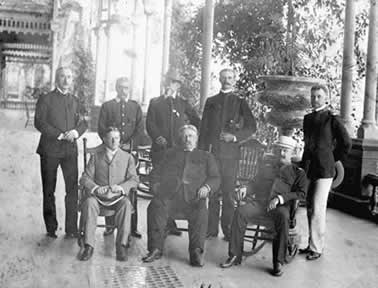From its humble beginnings as an Indian fishing village to its rapidly growing skyline, Tampa’s history is best told through some of its iconic buildings. Tampa’s history is dotted with interesting anecdotes and colorful characters, interestingly tied to beautifully crafted buildings that still stand.
I’ve been giving a lot of thought on what it takes to revitalize landmarks. What it takes to honor a building’s history by respecting its architecture and craftsmanship. So, in my quest to celebrate craftsmanship and honor history of Tampa Bay through the complex and at times divergent architecture that lines its street, I’ll be sharing some of my favorite Tampa Bay buildings and what makes them so special.
Tampa Bay Hotel
Of course, I have to start with the Tampa Bay Hotel…
Henry B. Plant, the transportation magnate that extended the railroad to Tampa in 1884 and started a steamship line from Tampa to Key West to Havana, Cuba, opened the Tampa Bay Hotel in 1891. The 511-room resort hotel cost $3 million to build and furnish and was the place to see and be seen in Tampa until 1930 when it closed due to the Great Depression.
Hotel Architecture
Plant chose the Moorish Revival architectural style, adopted by architects of Europe and the Americas in the wake of the Romanticist fascination with all things oriental. The hotel has six minarets, four cupolas, and three domes, which were restored in the 1990’s to their original stainless steel state. To this day, the Tampa Bay hotel is one of the most extravagant examples of Moorish Revival architecture in the United States.
Tampa Bay Hotel’s Notable History

When the Spanish–American War broke out, Plant convinced the United States military to use his hotel as a base of operations. Generals and high-ranking officers stayed in its rooms to plan invasion strategies, and enlisted men encamped on the hotel’s acreage. Most notably, Colonel Teddy Roosevelt and his Rough Riders stayed at the hotel during this time.
Babe Ruth signed his first baseball contract in the hotel’s Grand Dining Room. Even more impressive, in 1919, Ruth hit his longest home run during a spring training game at Plant Field, adjacent to the hotel.
From Hotel to Hall

The entire building (Tampa Bay Hotel) is one of 46 U.S. National Historic Landmarks in Florida since the 1970’s.


